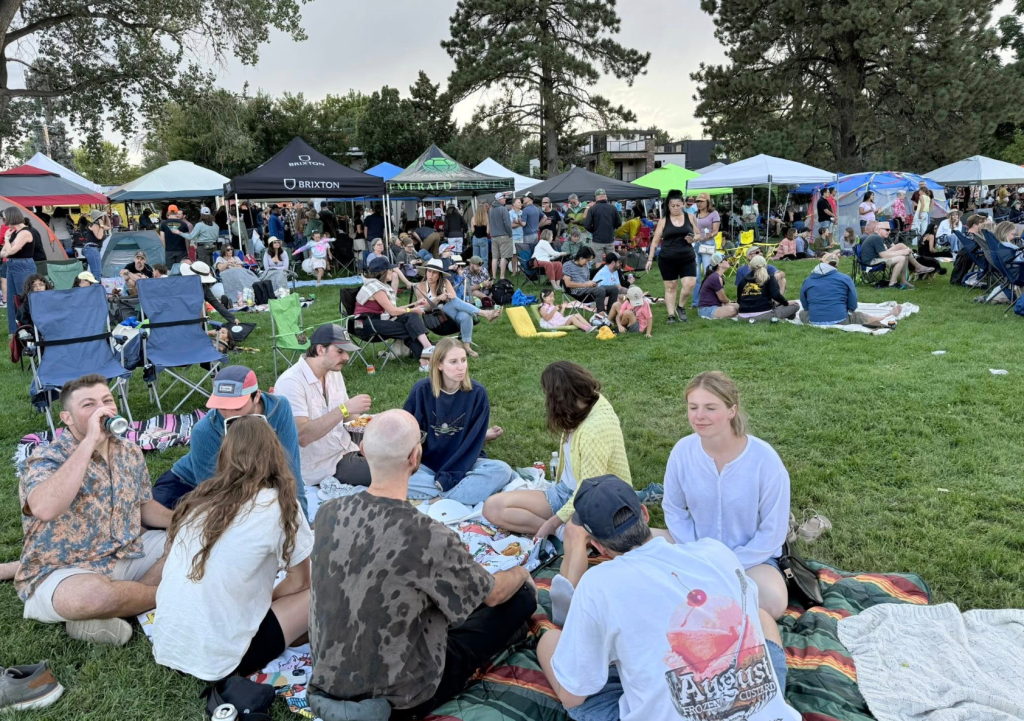Many Yankees fans will be making the trek to Coors Field this Friday to see their favorite team play the Rockies for the first time since 2016. But before the opening pitch, they can also delight in a display of items from the original Yankee Stadium at the National Ballpark Museum.
The museum is located in a small building about 600 feet adjacent to the home plate entrance of Coors Field and is a dream destination for baseball fans in the Denver area. It showcases memorabilia from some of the most iconic ballparks in American history, including the old Yankee Stadium which was controversially demolished in 2009. Some of the highlights of the museum’s Yankee Stadium display include signage and seats.
“We are the only museum dedicated to the fourteen classic ballparks,” said Museum Founder and Curator Bruce Hellerstein.
Visiting fans can expect to see an impressive collection of items from some of the most famous stadiums in the history of Major League Baseball, many of which are no longer standing today. An on-deck circle from Wrigley Field, signage from Fenway Park’s “Green Monster,” and seats from many of the fourteen classic ballparks are just a few examples of items within the museum’s halls.


One of Hellerstein’s personal favorite items on display is part of the chandelier from the marble rotunda of Ebbets Field, the former home of the Brooklyn Dodgers. The museum’s collection is constantly changing as well, as Hellerstein trades memorabilia with other collectors and buys new items.
Despite the many items shown, the most interesting aspect of the museum may be Hellerstein himself. Hellerstein’s extensive knowledge of baseball and outgoing nature ensures that each fan will have a personalized experience while visiting the museum.
“We give personal tours. We are there for [guests],” Hellerstein said. “People get up and close to these [items]. This isn’t like something that you have to look ten feet away at. I think we are the only museum that offers that.”
Visitors of the museum can typically expect Hellerstein or other employees to guide them through the museum, and give them a detailed explanation of what makes the items on display so special.
“It’s one thing to say, ‘Here’s an artifact.’ It’s another thing to tell the story behind it, especially how you got it,” Hellerstein said. “That’s the amazing thing. It really makes the museum come to life.”
An example of Hellerstein’s storytelling at the museum would be a fairly inauspicious Denver Zephyrs jersey within the Denver Bears exhibit. Hellerstein says that jersey was actually worn by Joey Meyer when he hit a monster 582-foot home run, which was the farthest ball hit in the history of Mile High Stadium.
On the jersey, Meyer wrote, “To the National Ballpark Museum, the jersey I wore when I hit the mammoth home run at Mile High Stadium.”
Hellerstein’s fascination with ballparks began while going to see the city’s old minor league baseball team, the Denver Bears, at Bear Stadium.
“I was a weird kid,” Hellerstein said. “I was more eager to see the Bear Stadium than necessarily the Denver Bears. I would ask the Bears players what it was like to play in cities like Oklahoma City and what the ballpark looked like.”


Hellerstein’s fascination with ballparks carried with him after his childhood, where he eventually amassed a sizable personal collection of ballpark memorabilia. He got the idea to open the museum after visiting the now-closed Atlanta Braves Baseball Club at the old Turner Field.
“I walked in [to the museum] and thought, ‘You know what? What I have in my collection is at worst on par with what I am seeing here.’ And alarm bells went off in my head,” he said.
Before opening the museum, Hellerstein worked as a certified public accountant. Since the museum’s creation, he juggles his duties as both an accountant and running the museum. He said that the overlap between accounting and baseball is surprisingly large, which makes the two a perfect combination.
“When you look at a box score or a scorebook, that’s just an accountant’s ledger. That is nothing more than a spreadsheet,” Hellerstein said. “The thing about baseball, more so than any other sport in the world, is that everything is accounted for. It’s an accountant’s dream.”
Currently, Hellerstein’s biggest goal with the museum is to expand. The relatively small building is already jam-packed with historical items, but having additional space would allow him to display even more, letting the public connect with baseball’s history.
“I’d love to just keep expanding so it draws people from not only all over the country, but across the world,” Hellerstein said. “[The museum] is something that I’d like to leave this earth with because the things here are so powerful.”



